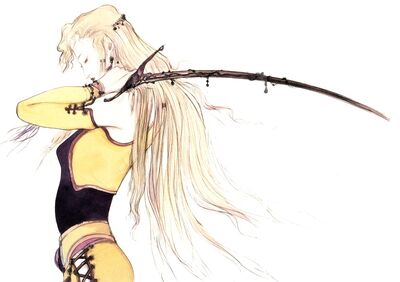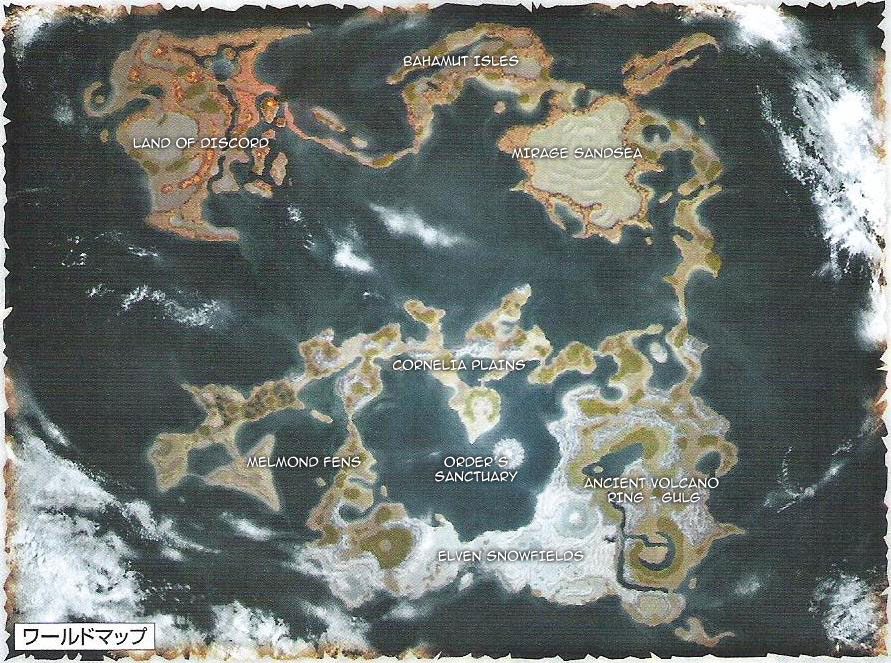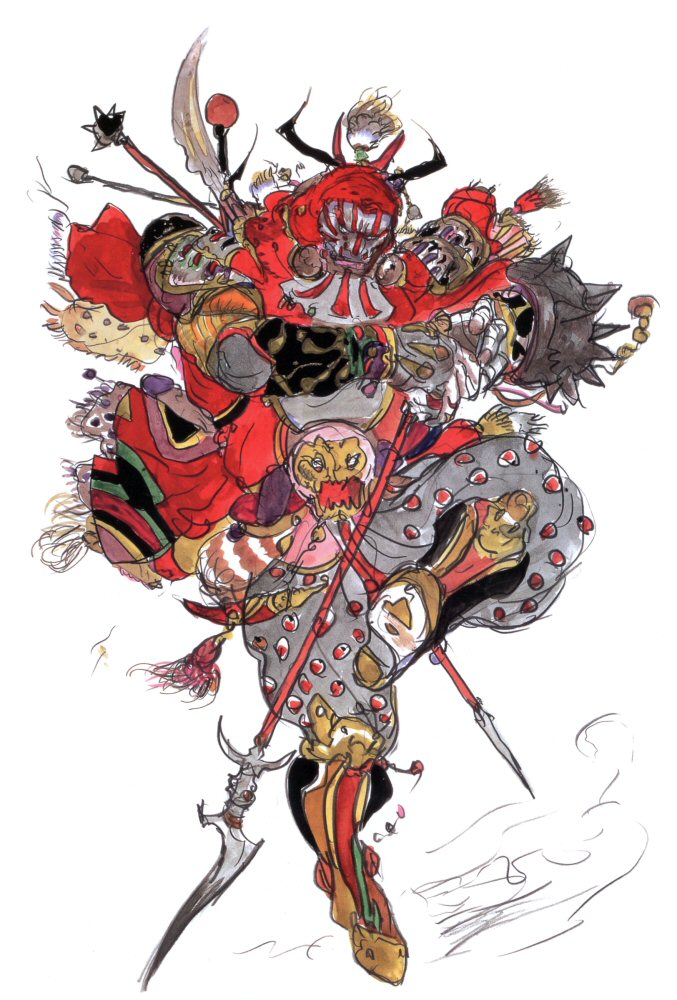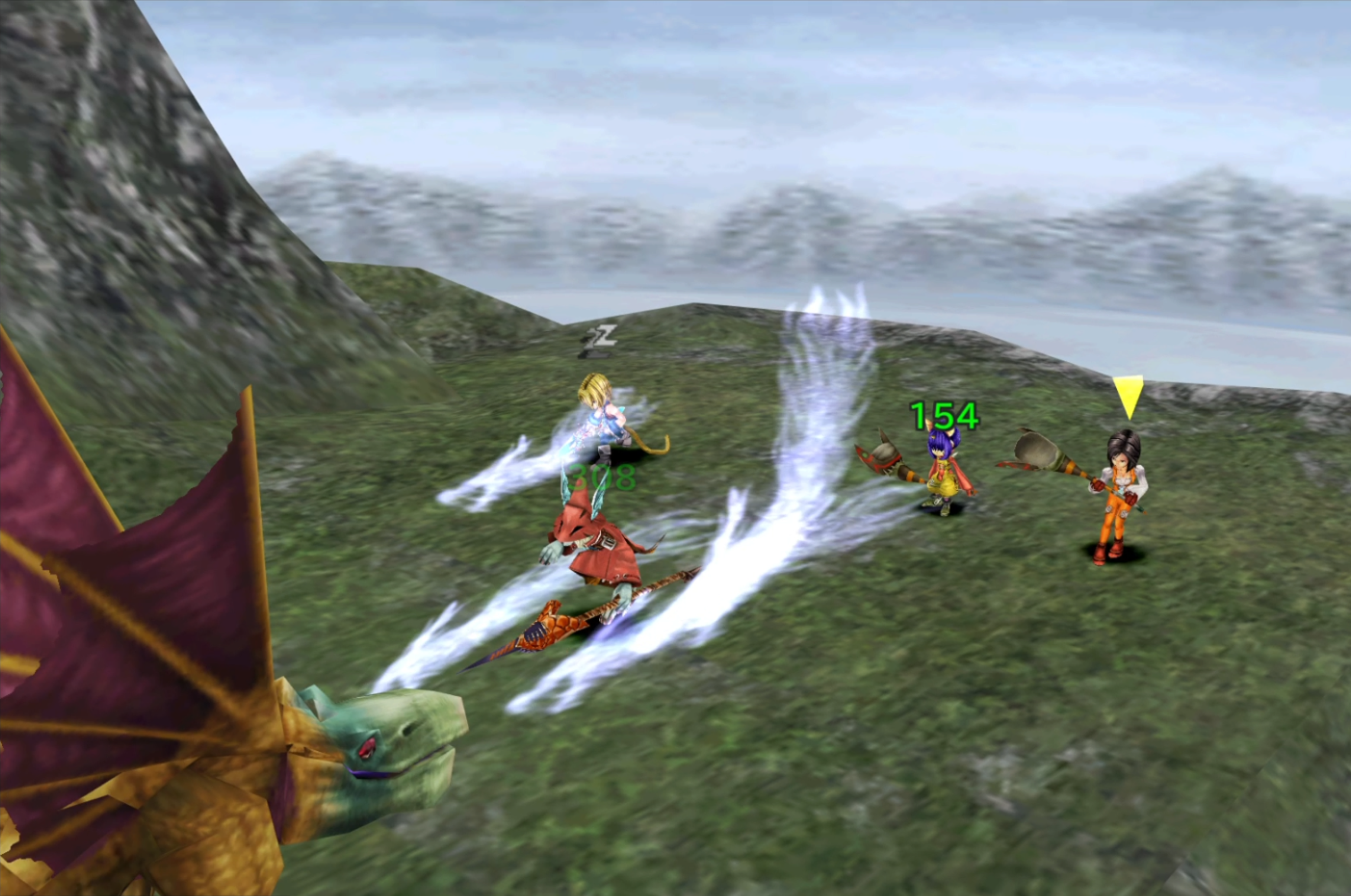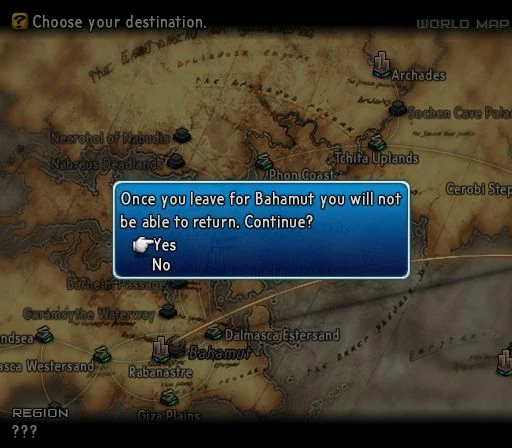For the group of Crisis Core -Final Fantasy VII- missions, see Missions (Crisis Core)/Shinra Electric Company.
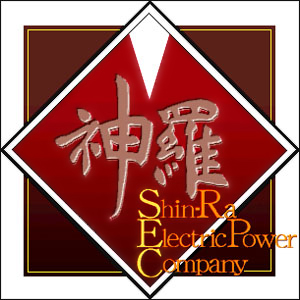
The Shinra Electric Power Company (神羅電気動力株式会社, Shinra Denki Dōryoku Kabushiki-gaisha?), also known as Shinra Inc. (神羅カンパニー, Shinra Kanpanī?, lit. “Shinra Company”) and sometimes spelled Shin-Ra, is a company in the world of Final Fantasy VII. It is primarily a power company, supplying Mako energy to the world and making electricity efficient and easily available. Shinra also operates in genetic engineering, space exploration, and has a strong military power including the elite group SOLDIER. This military power, combined with their monopoly of Mako energy, gives Shinra a measure of control over the world populace.
Nearly every central character in the entire Compilation of Final Fantasy VII has been negatively affected by Shinra’s tyrannical rule, even many who work under its banner. The main characters of Before Crisis -Final Fantasy VII- and Crisis Core -Final Fantasy VII- work for the company.
Story
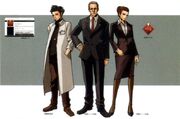
Shinra was originally a small weapons manufacturer known as the Shinra Manufacturing Works. When they discovered how to refine Lifestream into Mako energy as an electrical energy source, they exploded in power. The company spread power to the entire world, setting up Mako Reactors, quietly taking over every aspect of the Planet. With their ever-increasing finances, they expanded into many areas, including space exploration. As people became more dependent on Shinra’s power and goods, President Shinra, the owner of the company, became a global autocrat.
Starting a private army, using Mako energy to power the elite SOLDIER class and funding an undercover corps called the Turks, Shinra ruled with an iron fist. They began performing human experiments to create supersoldiers. When the people of Wutai disagreed with setting up Mako Reactors to their land, Shinra sent in their army to force their influence.
Shinra News LogoShinra News logo.
 Shinra constructed the metropolis of Midgar, which houses the Shinra Headquarters and eight large Mako Reactors. Shinra controls the city and the lives of its people, although the company introduced a figure-head mayor. It obtained control of much of the world’s information and broadcasting services, and created a propaganda news service called “Shinra News”. The main purpose of this propaganda machine is to declare those considered disloyal to Shinra dead and to distort events to Shinra’s favor. In protest to Shinra’s lies, an anti-Shinra news service called “Shinra Truths” appeared. Both of these can be viewed as emails in Crisis Core -Final Fantasy VII-.
Shinra constructed the metropolis of Midgar, which houses the Shinra Headquarters and eight large Mako Reactors. Shinra controls the city and the lives of its people, although the company introduced a figure-head mayor. It obtained control of much of the world’s information and broadcasting services, and created a propaganda news service called “Shinra News”. The main purpose of this propaganda machine is to declare those considered disloyal to Shinra dead and to distort events to Shinra’s favor. In protest to Shinra’s lies, an anti-Shinra news service called “Shinra Truths” appeared. Both of these can be viewed as emails in Crisis Core -Final Fantasy VII-.
Shinra pursues the Promised Land, a fertile land famous from Cetra legends; Shinra believes the land to be full of Mako energy, and plan to relocate their center of operations there in a project named Neo Midgar. Shinra goes through great lengths to create a person with Cetra’s power who could lead them to the Promised Land, but in the end, Neo Midgar is never built.
Dissent had long been felt among the people under Shinra’s rule. As the Mako Reactors destroy wildlife and outcast villages, people begin to despise their work. Many researched Mako, and realized Shinra was ripping life out of the Planet. Some Shinra employees desert as they discover the truths of the company, such as First Class SOLDIERs Zack Fair, Genesis Rhapsodos, Sephiroth, and Angeal Hewley. Anti-Shinra groups, such as the eco-terrorist group AVALANCHE, and the Wutai Crescent Unit, spring up to combat the army. Even the Turks mutiny over their leader’s unfair treatment and the human rights abuses the company regularly performs, causing a major fallout of many members.
President Shinra is killed when Sephiroth enacts his plan to summon Meteor to harm the Planet, and takes over Jenova’s remains stored in the Shinra Headquarters, morphing her body into his image and slaying the President in his office. Vice President Rufus Shinra takes over the company and hunts Sephiroth down to North Crater, a site of immense Mako energy the company believes to be the Promised Land they have been looking for.
Shin-Ra Building-MeteorMeteor looming above the Shinra Headquarters.
Their dreams are cut short as Sephiroth successfully summons Meteor and the Weapons,  the Planet’s defense mechanism, are awakened and begin attacking Shinra’s sites of power. Shinra fails to destroy the Meteor with the Shinra No. 26 rocket. In an attempt to destroy the Weapons, Shinra fires the Sister Ray, a powerful Mako cannon, destroying Diamond Weapon. Diamond Weapon fires off a salvo of energy before dying, and causes heavy damage to the Shinra Building.
the Planet’s defense mechanism, are awakened and begin attacking Shinra’s sites of power. Shinra fails to destroy the Meteor with the Shinra No. 26 rocket. In an attempt to destroy the Weapons, Shinra fires the Sister Ray, a powerful Mako cannon, destroying Diamond Weapon. Diamond Weapon fires off a salvo of energy before dying, and causes heavy damage to the Shinra Building.
President Rufus Shinra, thought to have been killed in the explosion at the Shinra Building, survives after a daring rescue and evacuation process by Vincent Valentine and Yuffie Kisaragi. With the leader of Shinra thought dead, the other executives at Shinra go rogue and begin acting on their own volition. Reeve Tuesti, the head of Urban Development, is stripped of his title and imprisoned by Heidegger and Scarlet, the leaders of Turks and Shinra army and Shinra’s weapons development, who are soon killed while facing AVALANCHE.
Professor Hojo, the head of Shinra’s science department, is killed when he tries to use the Sister Ray to help Sephiroth. The final remaining Turks abandon their mission to hunt down AVALANCHE and decide to help evacuate Midgar instead. As the Meteor falls on the city, it rips apart what remains of Midgar. When the Lifestream ejects from the Planet to stop the Meteor, the people realize how important the Lifestream is, and Shinra can no longer use it popularly as an energy supply.
In a conversation between Reno and Rude in Healen Lodge in Final Fantasy VII: Advent Children Complete, it is revealed that some Shinra employees are still dedicated to the company, and return to the company remnants to help atone for their past sins. Whether this refers only to the Turks or other employees as well is unknown.
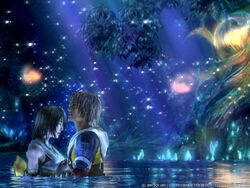


 Shinra constructed the metropolis of Midgar, which houses the Shinra Headquarters and eight large Mako Reactors. Shinra controls the city and the lives of its people, although the company introduced a figure-head mayor. It obtained control of much of the world’s information and broadcasting services, and created a propaganda news service called “Shinra News”. The main purpose of this propaganda machine is to declare those considered disloyal to Shinra dead and to distort events to Shinra’s favor. In protest to Shinra’s lies, an anti-Shinra news service called “Shinra Truths” appeared. Both of these can be viewed as emails in Crisis Core -Final Fantasy VII-.
Shinra constructed the metropolis of Midgar, which houses the Shinra Headquarters and eight large Mako Reactors. Shinra controls the city and the lives of its people, although the company introduced a figure-head mayor. It obtained control of much of the world’s information and broadcasting services, and created a propaganda news service called “Shinra News”. The main purpose of this propaganda machine is to declare those considered disloyal to Shinra dead and to distort events to Shinra’s favor. In protest to Shinra’s lies, an anti-Shinra news service called “Shinra Truths” appeared. Both of these can be viewed as emails in Crisis Core -Final Fantasy VII-. the Planet’s defense mechanism, are awakened and begin attacking Shinra’s sites of power. Shinra fails to destroy the Meteor with the Shinra No. 26 rocket. In an attempt to destroy the Weapons, Shinra fires the Sister Ray, a powerful Mako cannon, destroying Diamond Weapon. Diamond Weapon fires off a salvo of energy before dying, and causes heavy damage to the Shinra Building.
the Planet’s defense mechanism, are awakened and begin attacking Shinra’s sites of power. Shinra fails to destroy the Meteor with the Shinra No. 26 rocket. In an attempt to destroy the Weapons, Shinra fires the Sister Ray, a powerful Mako cannon, destroying Diamond Weapon. Diamond Weapon fires off a salvo of energy before dying, and causes heavy damage to the Shinra Building.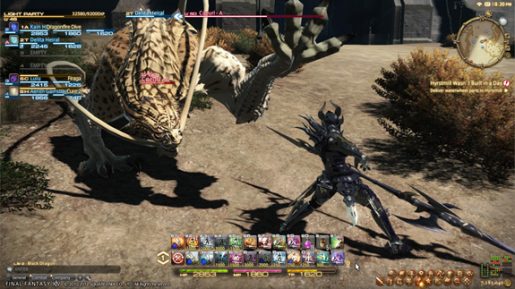
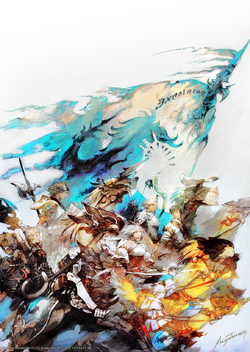 Promotional artwork for Final Fantasy XIV: A Realm Reborn, by Kazuya Takahashi. Several of the jobs and races in the game are depicted: Hyur, Lalafell, Mi’qote, Roegadyn and Elezen. In Latin, the word “excelsior” means “loftier” or “higher”, often taken in the sense of “ever upward!” – a fitting motto, given the game’s troubled history. The release of Final Fantasy XIV was met with widespread negative feedback, prompting Square Enix to issue an apology and replace the development team. A Realm Reborn is the title of the relaunched version, sharing the original’s world and lore, but rebuilding the game itself entirely. It is currently in the Beta phase of testing, with a full release anticipated later this year.
Promotional artwork for Final Fantasy XIV: A Realm Reborn, by Kazuya Takahashi. Several of the jobs and races in the game are depicted: Hyur, Lalafell, Mi’qote, Roegadyn and Elezen. In Latin, the word “excelsior” means “loftier” or “higher”, often taken in the sense of “ever upward!” – a fitting motto, given the game’s troubled history. The release of Final Fantasy XIV was met with widespread negative feedback, prompting Square Enix to issue an apology and replace the development team. A Realm Reborn is the title of the relaunched version, sharing the original’s world and lore, but rebuilding the game itself entirely. It is currently in the Beta phase of testing, with a full release anticipated later this year.